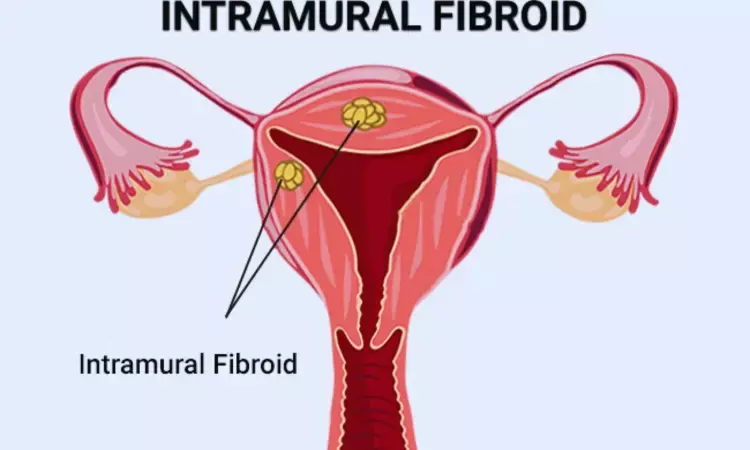- Home
- Medical news & Guidelines
- Anesthesiology
- Cardiology and CTVS
- Critical Care
- Dentistry
- Dermatology
- Diabetes and Endocrinology
- ENT
- Gastroenterology
- Medicine
- Nephrology
- Neurology
- Obstretics-Gynaecology
- Oncology
- Ophthalmology
- Orthopaedics
- Pediatrics-Neonatology
- Psychiatry
- Pulmonology
- Radiology
- Surgery
- Urology
- Laboratory Medicine
- Diet
- Nursing
- Paramedical
- Physiotherapy
- Health news
- Fact Check
- Bone Health Fact Check
- Brain Health Fact Check
- Cancer Related Fact Check
- Child Care Fact Check
- Dental and oral health fact check
- Diabetes and metabolic health fact check
- Diet and Nutrition Fact Check
- Eye and ENT Care Fact Check
- Fitness fact check
- Gut health fact check
- Heart health fact check
- Kidney health fact check
- Medical education fact check
- Men's health fact check
- Respiratory fact check
- Skin and hair care fact check
- Vaccine and Immunization fact check
- Women's health fact check
- AYUSH
- State News
- Andaman and Nicobar Islands
- Andhra Pradesh
- Arunachal Pradesh
- Assam
- Bihar
- Chandigarh
- Chattisgarh
- Dadra and Nagar Haveli
- Daman and Diu
- Delhi
- Goa
- Gujarat
- Haryana
- Himachal Pradesh
- Jammu & Kashmir
- Jharkhand
- Karnataka
- Kerala
- Ladakh
- Lakshadweep
- Madhya Pradesh
- Maharashtra
- Manipur
- Meghalaya
- Mizoram
- Nagaland
- Odisha
- Puducherry
- Punjab
- Rajasthan
- Sikkim
- Tamil Nadu
- Telangana
- Tripura
- Uttar Pradesh
- Uttrakhand
- West Bengal
- Medical Education
- Industry
Study Sheds Light on Impact of Intramural Leiomyomas on Fertility: Size Matters, Removal Offers No Benefit

USA: A recent systematic review and meta-analysis have delved into the relationship between intramural leiomyomas-commonly known as fibroids-and fertility, shedding light on implications for women's reproductive health. Published in Obstetrics & Gynecology, the study synthesized findings from numerous research studies to elucidate how these benign uterine growths impact fertility outcomes.
The study found lower fertility rates for women with intramural leiomyomas and women with more than one leiomyoma in any location. The removal of leiomyoma does not improve outcomes.
Intramural leiomyomas are non-cancerous tumors that develop within the muscular wall of the uterus. They are prevalent among women of reproductive age and can vary significantly in size and number. Concerns often arise regarding their potential interference with conception and pregnancy outcomes.
Against the above background, Elizabeth A. Pritts, Wisconsin Fertility Institute, Madison, WI, and colleagues aimed to evaluate fertility outcomes based on the size and number of intramural leiomyomas and outcomes after removal.
For this purpose, the researchers searched the online databases from 1994 to 2023. A total of 5,143 studies were identified, with the inclusion of 13 study groups. The study provided data on the size and number of leiomyomas, correlating these findings with clinical pregnancy rates and rates of ongoing pregnancies or live births.
The following were the key findings of the study:
- In data sets with maximum leiomyoma diameters of less than 6 cm for study inclusion, women with leiomyomas smaller than 3 cm had lower clinical pregnancy rates than women without leiomyomas, with an odds ratio (OR) of 0.53 and, for ongoing pregnancy or live-birth rates, an OR of 0.59.
- The ORs for clinical pregnancy rates in women with intermediately-sized leiomyomas (those between 3 cm and 6 cm) were lower than in women without leiomyomas, with an OR at 0.43 and, for ongoing pregnancy or live-birth rates, an OR at 0.38.
- In data sets without exclusion for women with larger-sized leiomyomas, clinical pregnancy rates were lower for those with leiomyomas smaller than 5 cm compared with those without leiomyomas, with an OR of 0.75.
- Women with leiomyomas larger than 5 cm showed no differences in clinical pregnancy rate compared with women without leiomyomas, with an OR of 0.71.
- Although women with a single leiomyoma in any location had no differences in outcomes, those with more than one leiomyoma had lower clinical pregnancy rates and ongoing pregnancy or live birth rates, with an OR of 0.62 and 0.57, respectively.
- The clinical pregnancy rate for women undergoing myomectomy for intramural leiomyomas was no different than those with intramural leiomyomas in situ, with an OR of 1.10.
"The findings imply that even small intramural leiomyomas are linked with lower fertility; removal does not confer benefit. Women with more than one leiomyoma in any location have lower fertility," the researchers concluded.
Reference:
Pritts TL, Ogden M, Parker W, Ratcliffe J, Pritts EA. Intramural Leiomyomas and Fertility: A Systematic Review and Meta-Analysis. Obstet Gynecol. 2024 Jun 27. doi: 10.1097/AOG.0000000000005661. Epub ahead of print. PMID: 38935974.
Dr Kamal Kant Kohli-MBBS, DTCD- a chest specialist with more than 30 years of practice and a flair for writing clinical articles, Dr Kamal Kant Kohli joined Medical Dialogues as a Chief Editor of Medical News. Besides writing articles, as an editor, he proofreads and verifies all the medical content published on Medical Dialogues including those coming from journals, studies,medical conferences,guidelines etc. Email: drkohli@medicaldialogues.in. Contact no. 011-43720751


